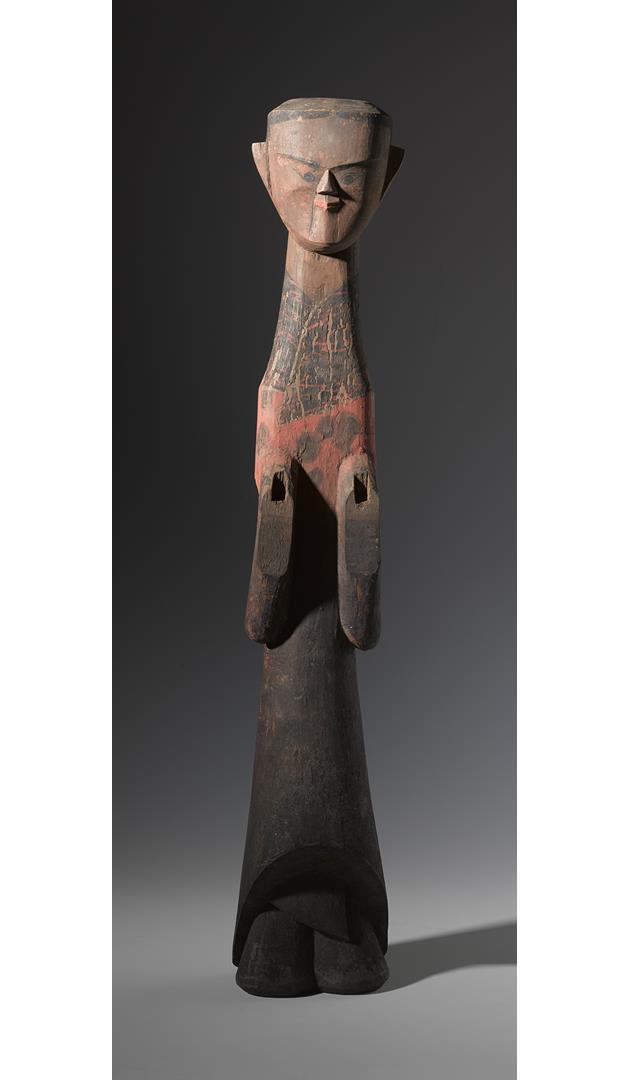Yong (male attendant)
3rd century BCE
The oldest painting colors in the Chinese funerary context were cinnabar red and black lacquer, substances that are both toxic and preservative. Painted-wood grave goods serving the afterworld needs of the deceased were decorated with patterns in this color scheme. The inventory might include coffins, vessels, and multiple sets of figures like this servant.
By the 3rd century BCE, red, black, green, yellow, and white belonged in the wuxing (“Five Agents”) system for understanding the cyclical workings of the universe, where the five colors correlated with the five elements, directions, animals, planets, body organs, and musical tones.
Wood with lacquer and paint
23 1/2 x 4 1/4 x 3 1/8 in. (59.69 x 10.8 x 7.94 cm)
Overall h.: 23 1/2 in.
Eugene Fuller Memorial Collection
49.122
Photo: Elizabeth Mann


